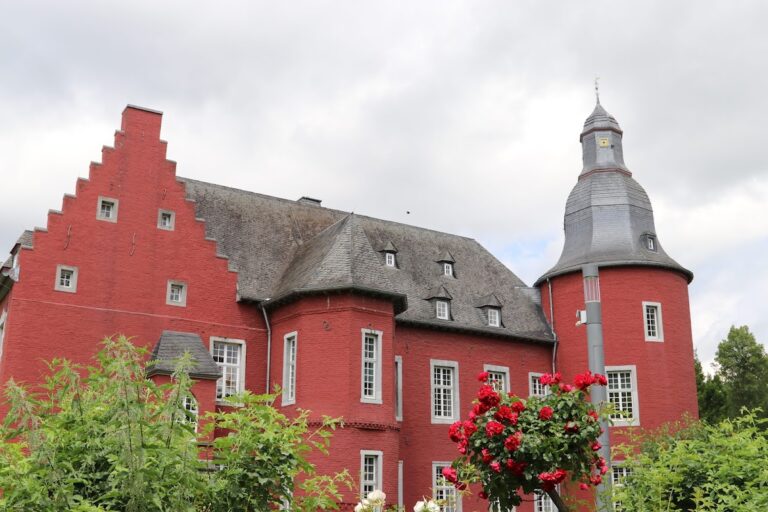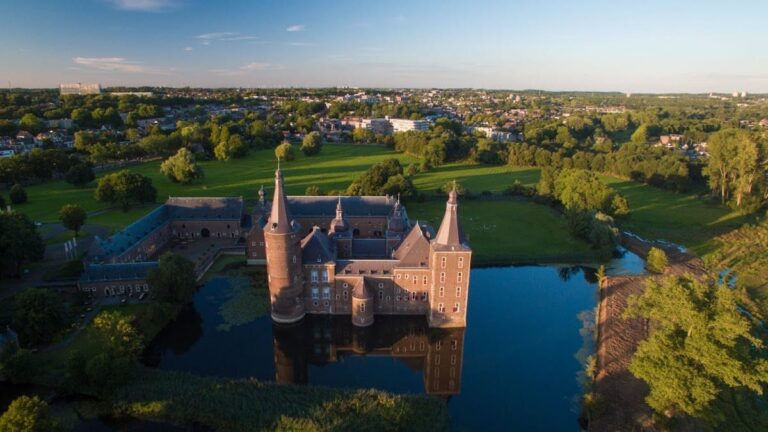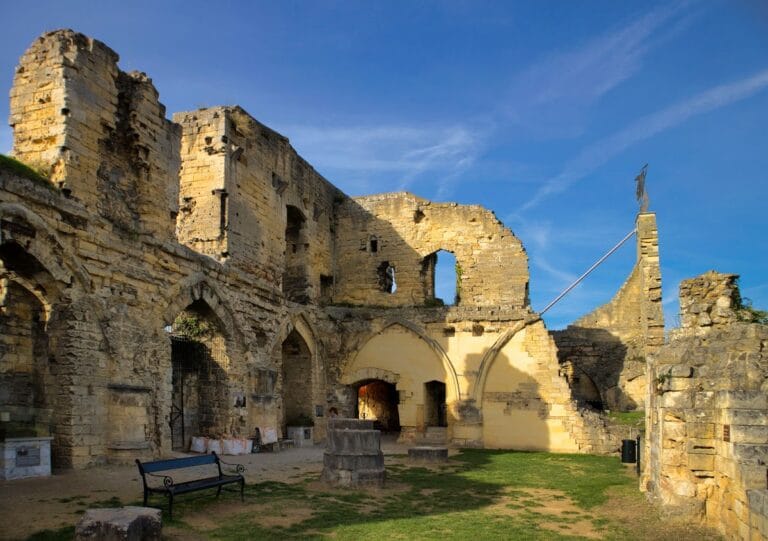Burg Rode: A Historic Castle in Herzogenrath, Germany
Visitor Information
Google Rating: 4.4
Popularity: Low
Google Maps: View on Google Maps
Official Website: www.burgrode.de
Country: Germany
Civilization: Unclassified
Remains: Military
History
Burg Rode is a historic castle situated in the town of Herzogenrath in modern-day Germany. It was originally constructed as a stronghold by the Counts of Saffenberg during the High Middle Ages. Its foundation served dual purposes: controlling the border region and operating as a toll collection point.
The first recorded mention of the castle dates back to 1104 in the annals kept by the nearby Rolduc Abbey, where it was referred to as “Castrensis Viculis.” By 1136, Burg Rode became part of the Duchy of Limburg through the marriage of Mathilda von Saffenberg, who brought the castle as dowry. The nearby Wurm River acted as a boundary both politically and ecclesiastically, dividing territories between the Diocese of Liège on the castle’s side and the Archdiocese of Cologne downstream.
Burg Rode occupied a key location close to the ancient Roman road known as the Via Belgica, a major trade route that connected Cologne with cities such as Heerlen, Maastricht, Tongeren, and extended to Boulogne-sur-Mer. This road was redirected near Herzogenrath in the early medieval period, which contributed to the castle’s importance in overseeing and taxing commerce. Indeed, surviving tax records from the neighboring Duchy of Brabant reveal that the toll revenues generated by Burg Rode exceeded 3,300 gold guilders annually, a sum vastly greater than other regional toll stations.
During the late 13th century, Burg Rode was involved in the Limburg succession war. The castle’s strategic position made it a target, and in 1283 the Duchy of Brabant attempted to capture it but did not succeed. Ultimately, though Brabant emerged victorious in the conflict following the 1288 Battle of Worringen, the castle changed hands afterward. It entered Brabant control when the Duchy of Limburg dissolved. The town’s name, Herzogenrath, first appeared in 1282 as “s’Hertogenrode,” a term meaning “the duke’s clearing,” signifying its connection to ducal authority after these events.
Throughout the Middle Ages and into early modern times, various noble families held Burg Rode, including the Droste von Herzogenrath, who also ruled over Alsdorf Castle nearby. The first knight associated with the castle was Gottfried von Laufenberg, recorded in 1150. Later, Harper von Laufenberg served as both castellan and steward of Burg Rode in the early 13th century and again in the early 14th century.
The castle’s ownership shifted in later centuries. It was temporarily leased to the Duchy of Jülich and came under the control of the Habsburg Netherlands from 1544 until the French Revolutionary forces occupied the region in 1794. After the Congress of Vienna in 1815, Burg Rode was incorporated into the Kingdom of Prussia, administratively separating it from nearby Kerkrade and the church estates of Rolduc Abbey. The modern border dividing Kerkrade from Herzogenrath lies close to the castle grounds.
In the 20th century, Burg Rode underwent restoration in a style that evoked its historical appearance. Between 1913 and 1978, it served as the town hall for Herzogenrath. Today, it remains a site of cultural significance and community activities.
Remains
Burg Rode is a hilltop castle centrally located within Herzogenrath, close to the Dutch border near Kerkrade. The castle’s position on elevated terrain underlines its strategic purpose controlling the surrounding area and trade routes.
The fortress developed over time through expansions that elevated it from a basic settlement into a first-class stronghold. These enhancements fortified its defenses to meet the demands of its military and economic roles. The building materials and specific techniques of construction are not detailed, but the castle’s evolution reflects its growing importance from the 12th century onward.
Today, Burg Rode has been restored in a style that reflects its medieval origins while incorporating elements typical of early 20th-century historical revival architecture. Its close proximity to Rolduc Abbey underscores their historical connection, with the abbey complex situated adjacent to the castle grounds.
The castle’s structure has been maintained sufficiently to allow for local cultural uses, and its setting near a longstanding political boundary remains significant. Features such as gates, walls, or other defensive works have been preserved or reconstructed, though precise architectural details are not documented in the available sources.
Overall, Burg Rode stands as a restored medieval fortress that embodies centuries of regional history, from its early role as a toll castle to its later administrative functions under various ruling powers.










